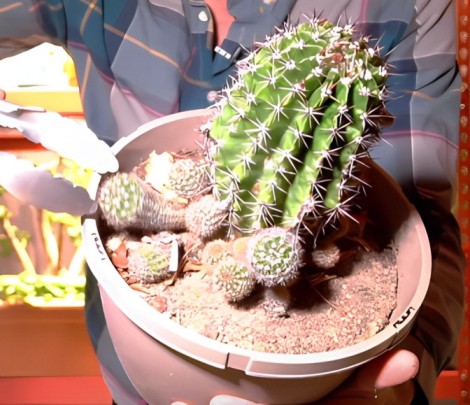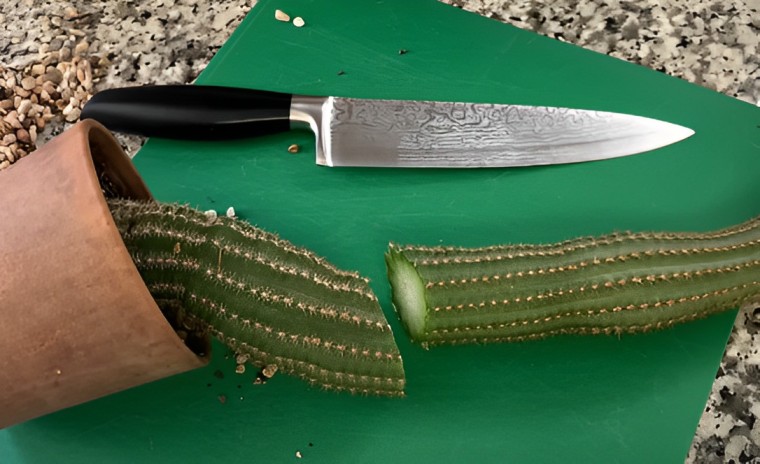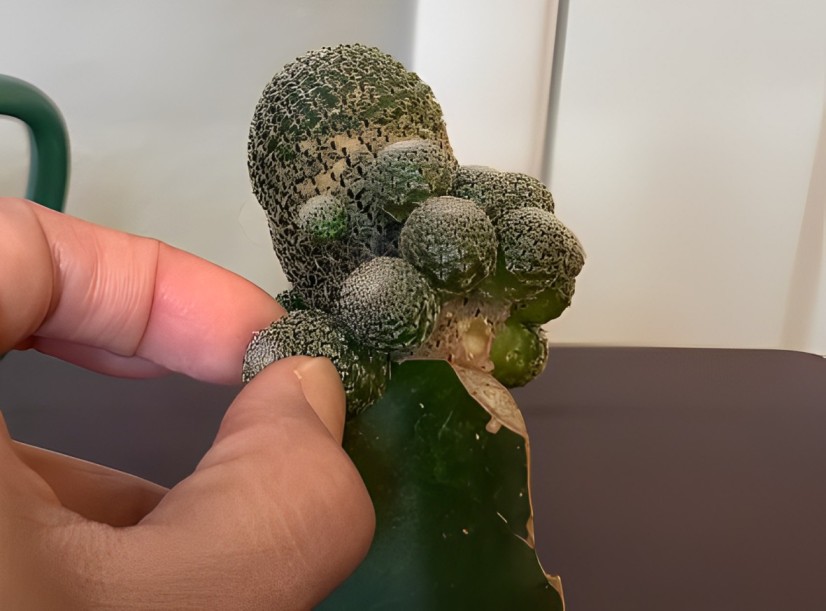How to propagate a cactus: Easy steps
Propagation is the method by which you can generate a new baby plant from the existing plant. So now we talk about how to propagate a cactus and you can propagate cactus from stem or leaf cutting. And then beginners will be able to grow very easily through different methods like offset because cacti are very easy to grow.

With the diminishing natural habitats of succulents and cacti, the imperative to propagate and nurture these species in cultivation grows increasingly vital for their continued existence.
The Cactus is a green plant and present is in different shapes like small tall barrels and flat shapes. It can be present in different locations in USA Mexico California and Also we talk about the lifespan of cacti plants it can vary from 15 to 200 years of age.
| Cactus Type | Scientific Name | Native Region | Size | Lifespan | Notable Features |
| Saguaro | Carnegiea gigantea | Sonoran Desert, USA | Up to 60 feet | 150-200 years | Tall, branching arms |
| Barrel Cactus | Echinocactus spp. | Americas, Southwest | Varies | 50-100 years | Globe-shaped, ribbed |
| Joshua Tree | Yucca brevifolia | Mojave Desert, USA | Up to 40 feet | 150-200 years | Branched, spiky yucca |
| Organ Pipe Cactus | Stenocereus thurberi | Sonoran Desert, USA | Up to 20 feet | 150-200 years | Multiple tall, slender stems |
| Golden Barrel | Echinocactus grusonii | Mexico | Up to 3 feet | 30-50 years | Round and covered in golden spines |
Contents
- 1 What You Need
- 2 How to Propagate A Cactus Step 1: Take A Cutting
- 3 How to Propagate A Cactus Step 2: Prepare A Planter
- 4 How to Propagate A Cactus Step 3: The Growing Process
- 5 Step 4: Caring For Your New Cactus
- 6 Propagating from cuttings
- 7 Propagating from seeds
- 8 Propagating from offsets/offshoots
- 9 Grafting
- 10 Propagating from cactus pads
- 11 When NOT to Propagate a Cactus Plant
- 12 FAQs
What You Need
Materials
- Cactus cuttings or seeds
- Well-draining potting mix
- Small pots or containers
- Rooting hormone (optional)
- Perlite or sand (for seedlings)
- Plastic wrap or a plastic dome (for cuttings)
- Gravel or small rocks (for topdressing)
Tools
- Pruning shears or a sharp knife (for taking cuttings)
- Gloves (to protect your hands from spines)
- Watering can or spray bottle
- Small trowel or spoon (for planting)
- Labeling markers or tags (to identify cactus varieties)
- A sunny location or grow lights (for proper lighting)

How to Propagate A Cactus Step 1: Take A Cutting
Taking a cutting is the initial step in cactus propagation. Selecting a healthy cactus plant to take a cutting from is the first step. When making a clean cut, use sharp pruning shears or a clean, sharp knife. Wear gloves to protect your hands from the cactus spines.
Make sure your cutting contains a portion of the cactus stem and is at least a couple inches long. To prevent rotting when planted, give the cut end a few days to a week to callus over. For your cactus to successfully reproduce, this callusing stage is crucial.
How to Propagate A Cactus Step 2: Prepare A Planter
The second step in cactus propagation is to get the planter ready. Due of their sensitivity to overwatering, cactus should be placed in a compact pot or container with sufficient drainage.
Fill the pot with a potting mixture for succulents or cacti that drains well, making sure the container has a hole at the bottom for any extra water to drain out.
To increase drainage, you can add perlite or sand to the potting mix when cultivating cacti from seeds as opposed to cuttings.
Create a tiny depression or indentation in the centre of the dirt and gently pat it down to level it out before planting your cactus cuttings or seeds. For your propagated cactus to thrive and establish itself, it is essential to fill the planter with well-draining soil.

How to Propagate A Cactus Step 3: The Growing Process
The actual growth process takes place in the third step of cactus propagation. If you are starting a plant from a cutting, firmly put the callused end of the cutting into the potting soil while keeping it upright. If you’re starting from seeds, plant them as directed by the cactus species, typically only softly pushing them into the soil’s top layer.
Lightly moisten the soil after planting to help it settle around the cutting or seeds. Put the container in a bright area where the cactus may get bright but filtered sunlight or use grow lights.
To avoid root rot, keep the soil wet but not waterlogged and let it dry out in between waterings. Your cactus cutting or seeds will start to develop and establish themselves in their new container with time, the right care, and patience.
Step 4: Caring For Your New Cactus
Taking care of your new cactus as it grows is step four in the cactus propagation process. As your budding cactus becomes established, gradually increase the amount of sunshine it receives, making sure it gets at least 6 hours each day of indirect light.
Since cacti love to dry out between waterings, carefully monitor the soil’s moisture level and use little water. During the growing season (spring and summer), fertilise your cactus with a diluted, balanced cactus fertiliser to encourage healthy development.
Keep a watch out for pests or illness symptoms, and take immediate action on any problems. If your cactus outgrows its present pot as it gets older, you might need to repot it into a bigger container.
Propagating from cuttings

Propagating a cactus from a cutting involves a few key steps:
Choose a Healthy Parent Cactus: Pick a healthy parent cactus from which to take the cutting.
Get Your Tools Ready: Use clean, sharp pruning shears or a knife for a precise cut while wearing gloves to protect your hands from sharp objects.
Take a Cutting: Make a precise cut above a cactus pad or section. A few inches should be added to the cutting.
Allow Callusing: For a few days to a week, let the cut end of the cactus cutting callus and air dry. Thus, rotting is avoided.
Plant the Cutting: Firmly plant the callused end of the cutting into a small pot of well-draining cactus soil.
Ensure Adequate Lighting Place the pot in a bright spot with some indirect light to promote root growth.
Water sparingly: To prevent overwatering and root damage, water sparingly and only when the soil is dry.
Monitor Growth: Keep an eye out for any indications of fresh growth, and exercise patience while it takes hold.
Propagating from seeds
Propagating a cactus from seeds involves several key steps:
- Cactus seeds should be picked up from mature cacti or chosen from a reliable source.
- Create a potting mixture that drains well, adding perlite or sand for better drainage.
- The prepared mixture should be poured into tiny pots or seed trays, leaving some room at the top.
- Cactus seeds should be lightly pressed into the soil’s top layer, not buried.
- To help the seeds take root and create a humid atmosphere, softly mist the soil.
- To preserve moisture and warmth, cover the pots or trays with plastic wrap or a plastic dome.
- Place the containers in an area with indirect sunlight that is warm and bright.
- Keep an eye on the soil’s wetness to make sure it doesn’t get too wet or dry.
- As seedlings emerge, gradually increase their exposure to sunshine as they develop.
- As seedlings outgrow their first containers, transplant them into separate pots.
- As your cactus seeds grow into strong plants, keep taking care of them.
Propagating from offsets/offshoots
Propagating a cactus from offsets or offshoots involves the following steps:
- Look for mature cacti with offsets or offshoots, which are small, new growths connected to the parent plant.
- You should put on gloves to protect your hands since some cactus spines are potentially sharp.
- To gently separate the offset from the parent plant, use either your hands or a clean, sharp knife.
- Allowing the separated offset to air dry for one or two days will help it develop a callus.
- In a smaller pot with good-draining cactus soil, make a small hole.
- After placing the callused offset within the hole, lightly compress the surrounding soil.
- Put the container in a location that receives bright, indirect sunlight, and water the soil gently.
- As the branch matures, gradually increase the amount of sunlight it receives, exactly as you would for a mature cactus
Grafting

Propagation of cacti through grafting involves joining two different cactus species together, typically a hardy rootstock and a desirable scion. This method is commonly used for rare or slow-growing cacti. Here are the key points for grafting a cactus:
- Select a healthy scion cactus, which is the ideal species to propagate, and a rootstock cactus that is more robust and quick-growing.
- To generate matching surfaces for grafting, cut both the rootstock and scion cactus in straight, diagonal lines.
- Ensure perfect alignment and a tight fit by fastening the scion to the rootstock using grafting rubber bands or specialized grafting clamps.
- Give the grafted cactus time to recover and solidify, which might take many weeks. Maintain a warm, dry, and well-ventilated environment for the graft.
- Once the graft has taken root, gradually increase its exposure to light while making sure it gets enough sunshine to promote development.
- Keep an eye out for indications of effective fusion and growth in the grafted cactus, and modify care as necessary.
Propagating from cactus pads
To propagate a cactus from a pad:
- Pick a healthy pad: Choose a mature, undamaged cactus pad from the parent plant.
- Let it callus: Place the cut end in a shaded spot for about a week to prevent rot.
- Plant it: Bury the callused end about an inch deep in well-draining soil, cut side down.
- Water sparingly: Only water lightly and let the soil dry between waterings.
- Provide indirect sunlight: Start in a bright, shaded area and gradually increase light exposure.
- Wait for roots: Be patient as it takes weeks to months for roots and shoots to grow.
- Care for the young cactus: Follow regular cactus care once it’s established.
When NOT to Propagate a Cactus Plant
There are certain situations when you should avoid propagating a cactus plant:
Unhealthy Parent Plant: It’s not suggested to propagate from a parent cactus plant if it’s sick, stressed, infested with pests, or otherwise unhealthy. You ought to hold off till the parent plant is healthier.
Avoid spreading during periods of extreme weather, such as prolonged periods of high heat or bitter cold. During these periods, cacti are more delicate, and growing new plants might stress them even more.
Overcrowding: It might not be the best time to propagate if you currently have too many cacti or not enough room for additional plants. Poor growth circumstances can result from crowding for both the parent plant and its offspring.
When dealing with invasive or protected species, in particular, it is important to be informed of local laws governing cactus proliferation. Some cacti may not be allowed to be propagated or may need specific permission.
Lack of Proper Care: It’s better to wait to propagate cacti if you can’t provide them the proper care and attention until you can make sure of their welfare. Poor care might result in stunted growth or even plant death.
Mastering Cactus Propagation Techniques
In the world of cactus cultivation, understanding how to propagate a cactus is essential. Whether you have a cactus pad, pup, or cutting, the process can be quite straightforward. To propagate a cactus pad, select a healthy pad, let it callus for a few days, and then plant it in well-draining soil.
For cactus pups, carefully separate them from the parent plant and replant them in their own pots. If you encounter root rot, don’t despair; there’s still hope. Learn how to propagate a cactus with root rot by cutting away the affected parts and repotting the healthy sections.
Additionally, if you’re drawn to the allure of succulent cacti or want to salvage a broken-off cactus, these techniques offer solutions. Just remember, with the right care and attention, you can nurture these cacti to grow into thriving plants.
Cultivating Healthy Cacti: Growing and Nurturing Your Collection
In the realm of cactus care, the journey begins with knowing how to grow a cactus successfully. Whether you’re starting from seed or nurturing a mature plant, the principles remain constant. Provide your cactus with well-draining soil, appropriate sunlight, and the right amount of water to thrive.
Growing a cactus indoors or at home can be a rewarding experience, and it’s essential to create a suitable environment. For those who enjoy the challenge of Minecraft, learning how to grow a cactus in the game adds an extra layer of enjoyment.
As you delve into the world of cacti, consider exploring unique varieties like the barrel cactus, fairy castle cactus, or fishbone cactus, each with its own propagation techniques. Embrace the diversity of these plants and the wealth of information available to become a true cactus enthusiast.
FAQs
Can you cut off a piece of cactus and plant it?
Most cacti and succulents can be easily propagated from stem or leaf cuttings and more methods.
Can you propagate cactus from a leaf?
Some species’ pups, a stem cutting, or even a single leaf can be used to start a new plant.
How do cactus propagate naturally?
Many cactus species reproduce asexually by developing offsets or lateral stems.






